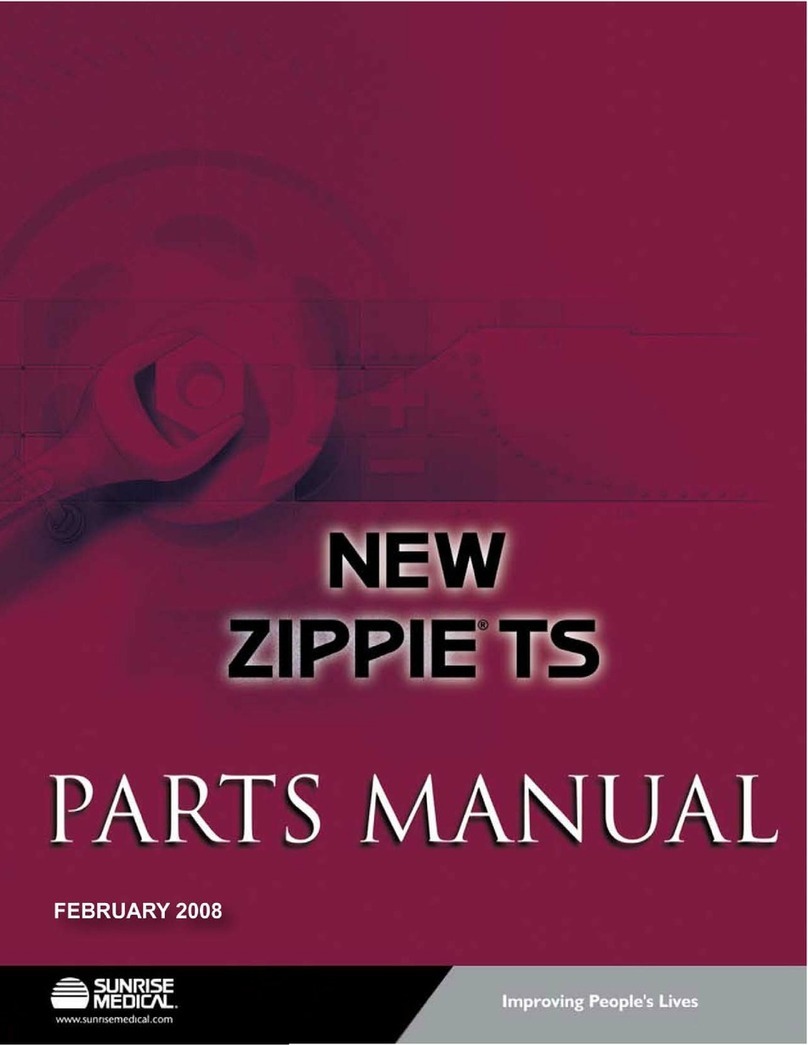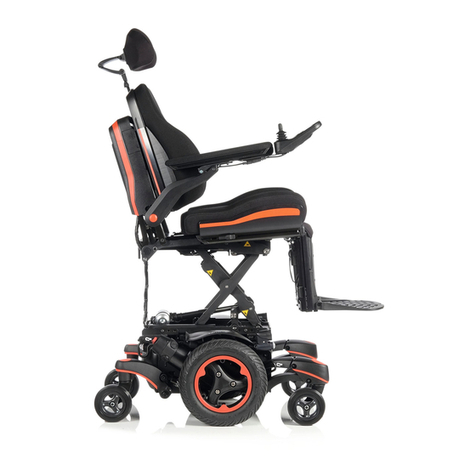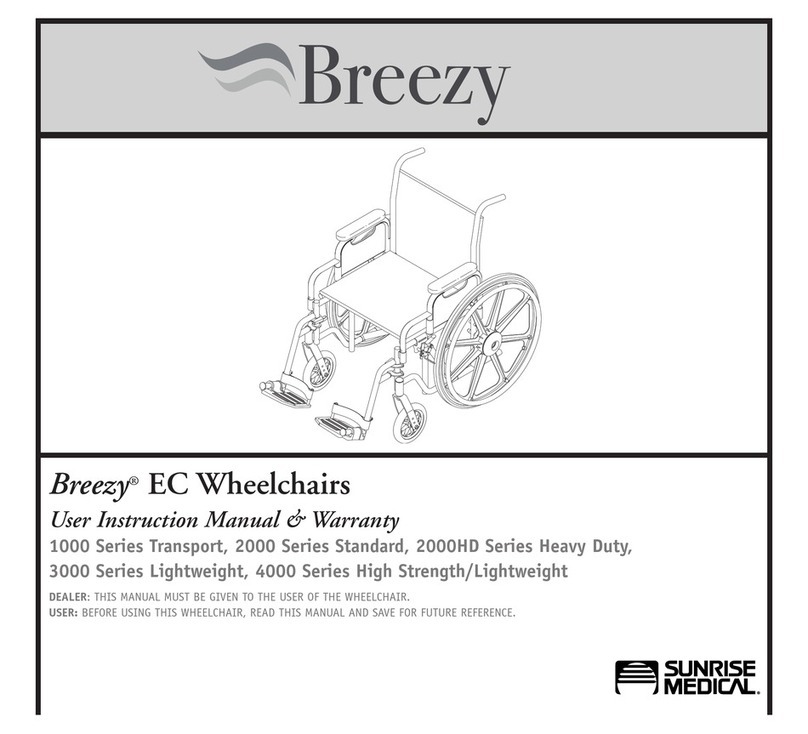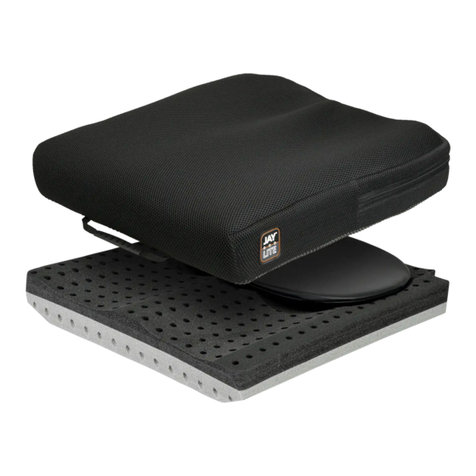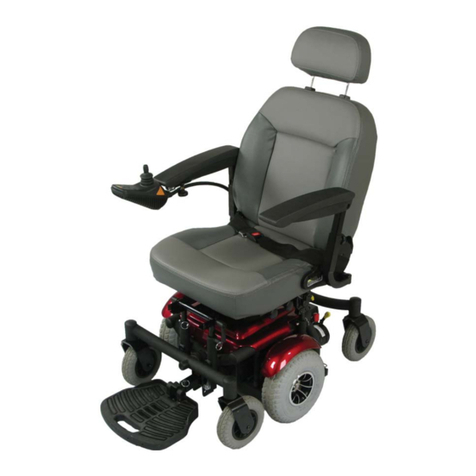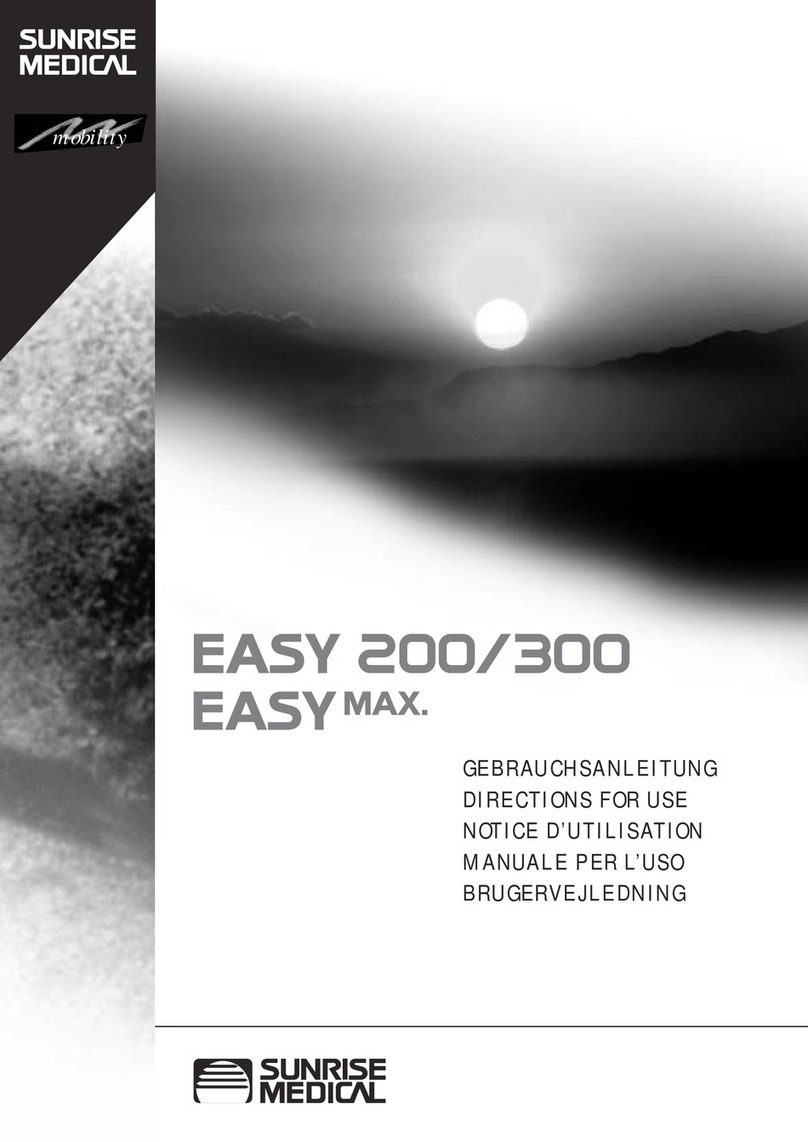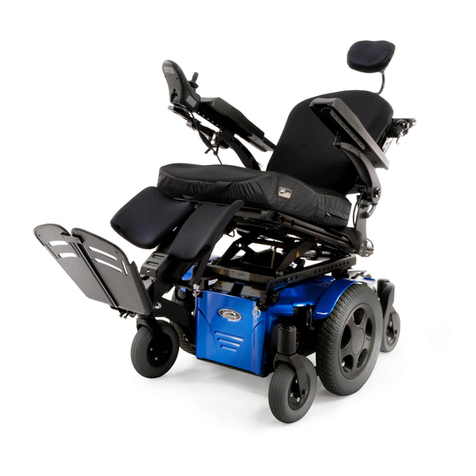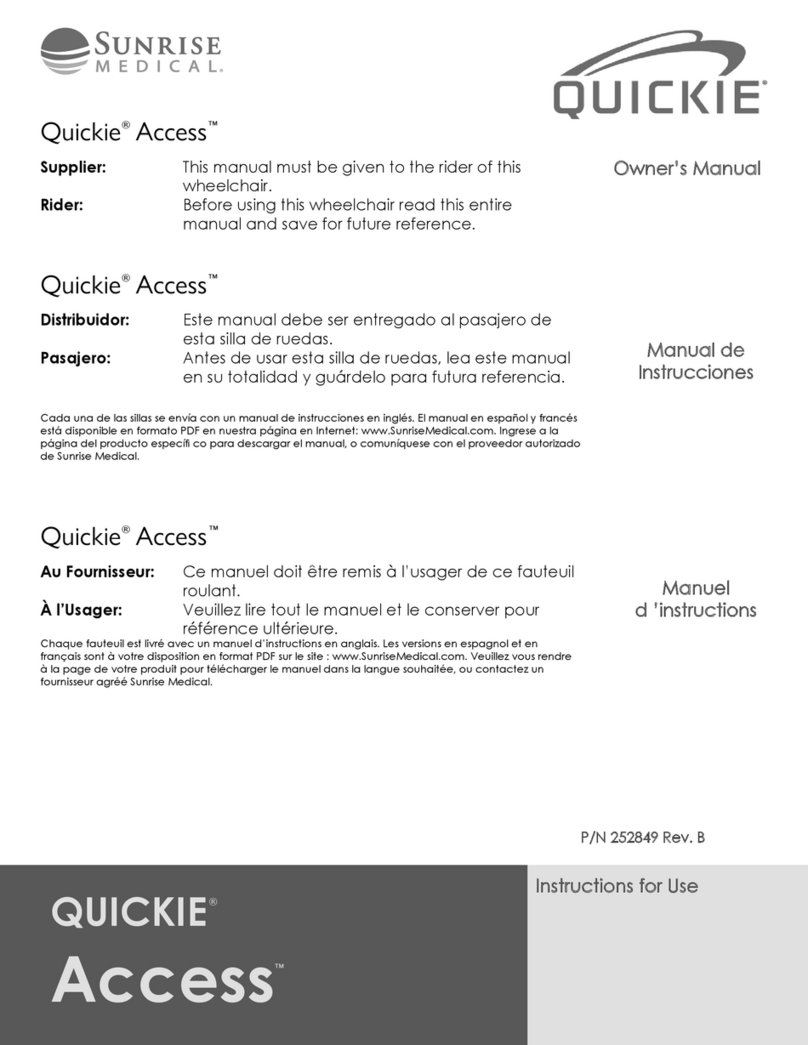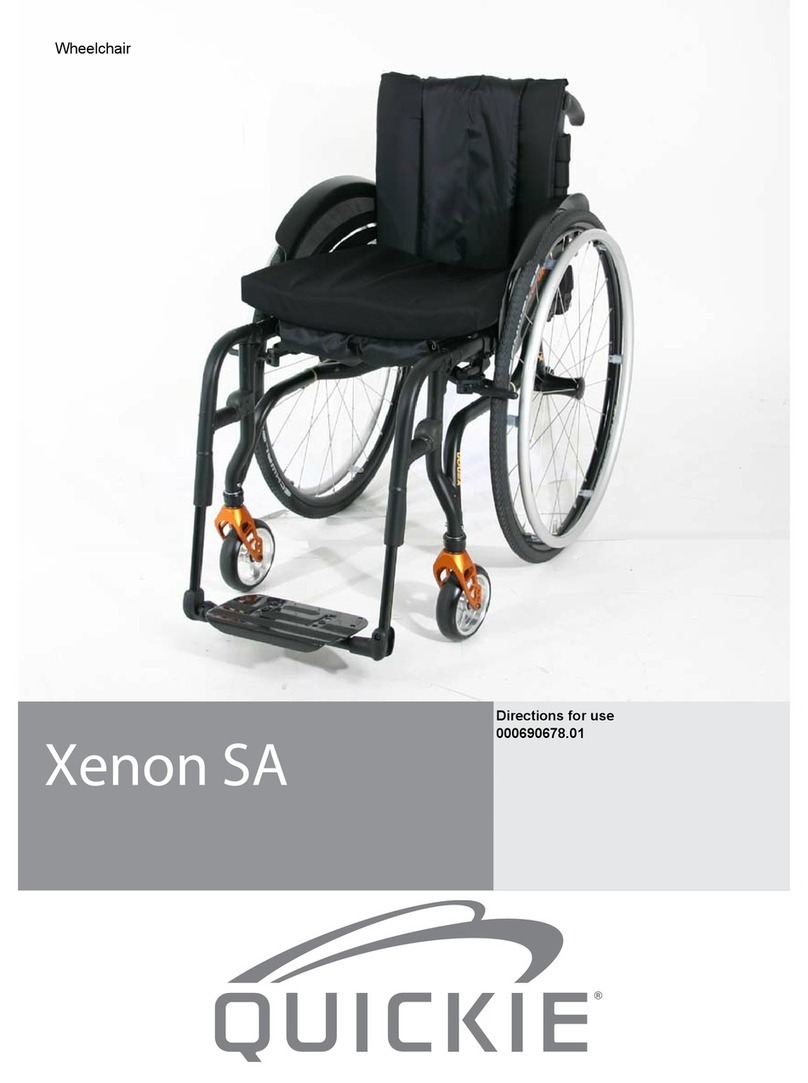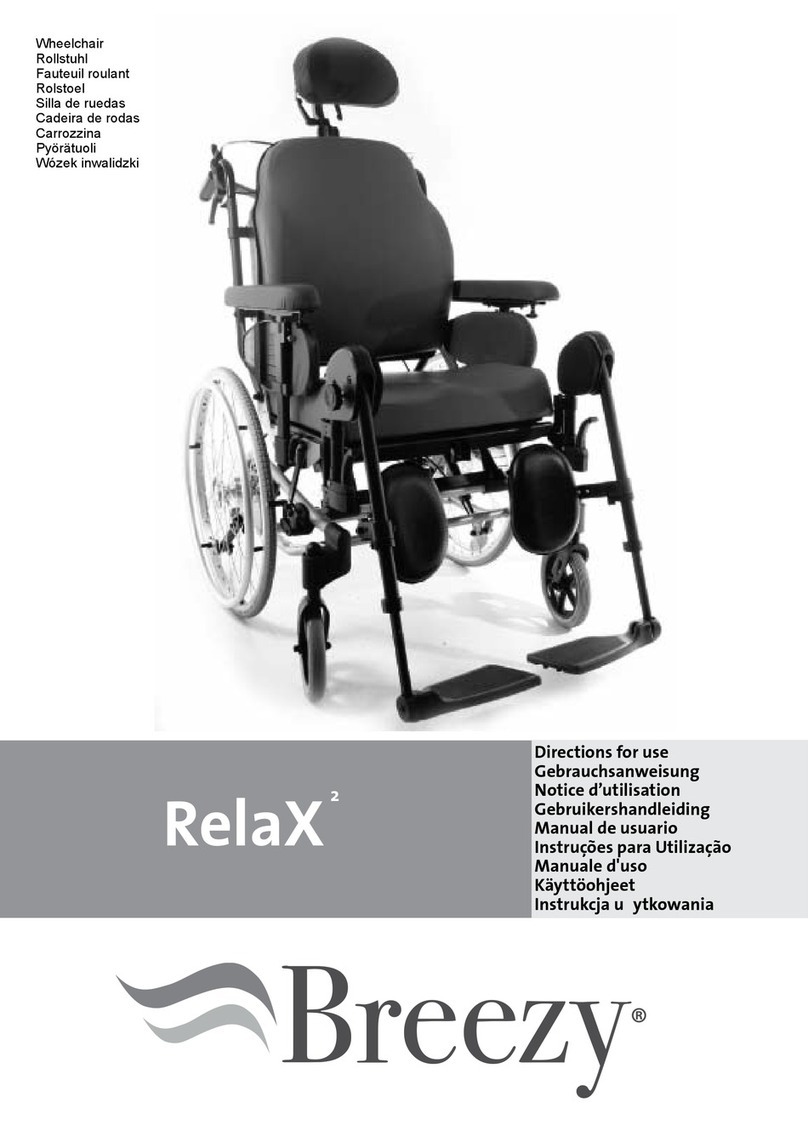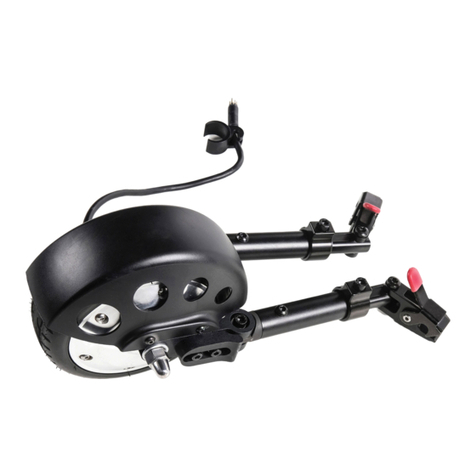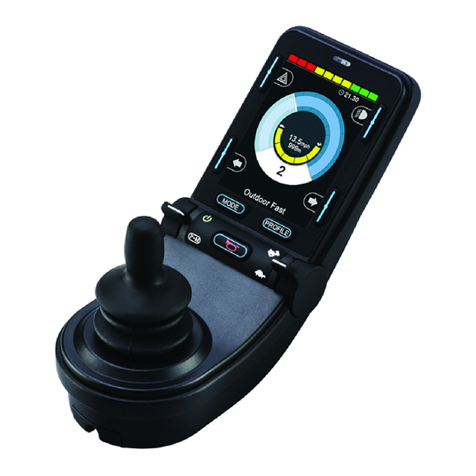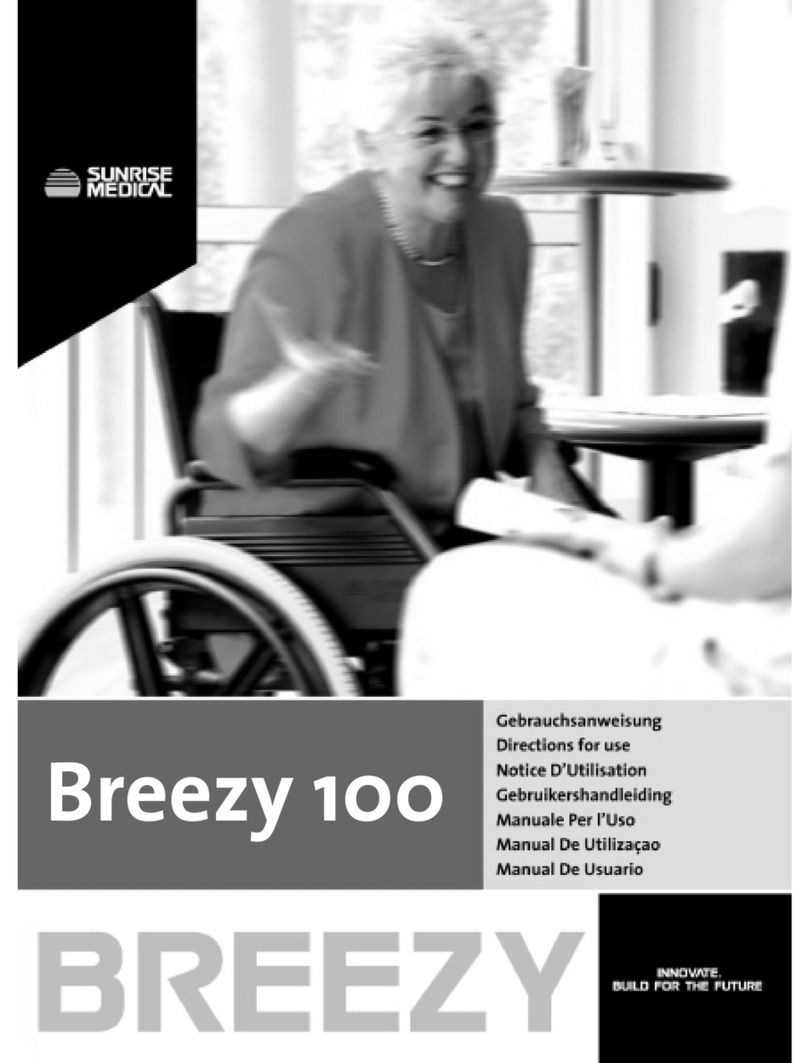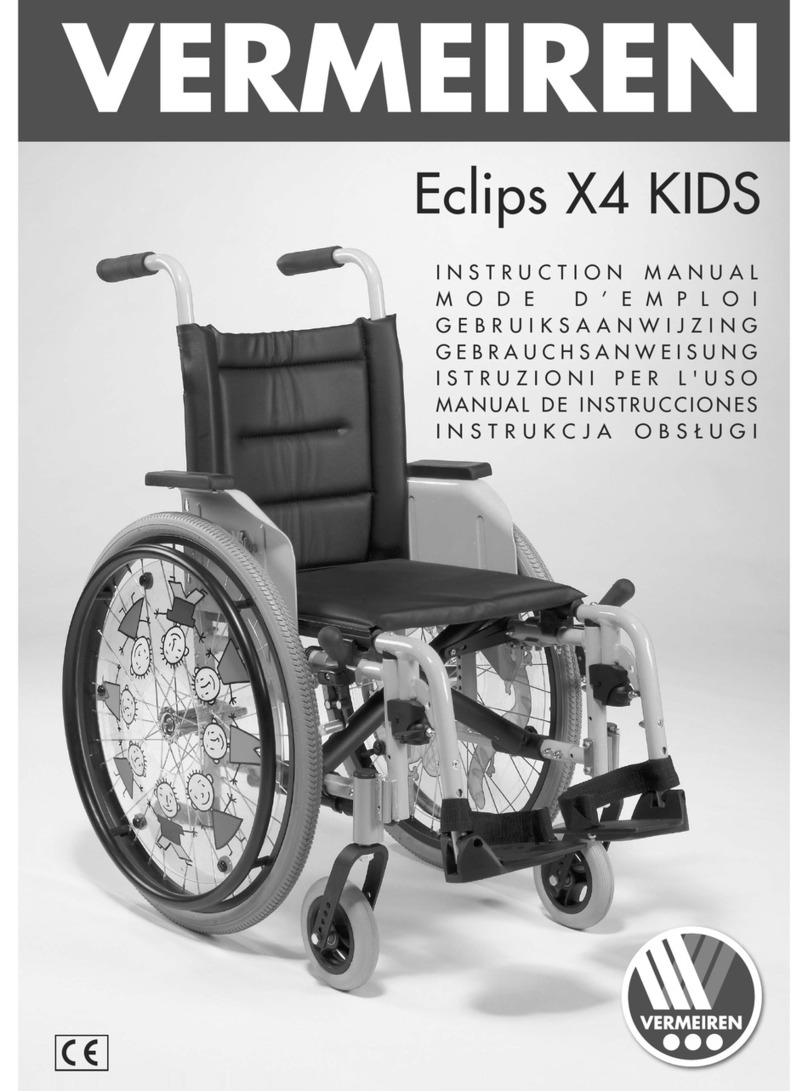
Quickie®Q500®H General Manual
251688 Rev. C 10
5.0 USING THE WHEELCHAIR
DANGER!
1. Be aware that you may need to adjust the controller (joystick) settings of
your system.
2. Check and adjust the settings every six to twelve months.
3. Consult your Sunrise Medical authorized dealer to adjust the control settings
immediately if you notice any change in your ability to:
a. Control the joystick.
b. Hold your torso erect.
c. Avoid running into objects.
5.1 Checking wheelchair before use
Perform the following daily check routine before driving:
CAUTION!
Checking wheels and tire
Is there still enough tire tread. Are the tires suciently inated (Chapter 8.2)
Checking batteries
1. Before using your vehicle for the very rst time, please charge your batteries
for a period of 24 hours.
2. Are the batteries suciently charged? The green lights on the battery
indicator must be on. ( Controller)
WARNING!
Battery chargers are only intended to charge:
1. 24V
2. Lead Acid and Gel style batteries.
Checking lights and indicators
Ensure that the lights and indicators are functioning correctly and lens screens are
clean before going outdoors at night. ( Controller)
Checking joystick
With the control system switched o, check that the joystick is not bent or
damaged and that it returns to the center when you push and release it.
Checking free wheel switch
Ensure that the free wheel switch has been set to ‘drive’ (Chapter 5.9).
Checking seating
1. Ensure that all the cushions are in place.
2. Ensure that the backrest is correctly tted and adjusted.
3. Visually inspect the wheelchair to ensure the leg rests, armrests, etc. are
correctly positioned and attached to the wheelchair and all fasteners are
suciently tightened.
4. Ensure that the seat interface knobs are tight and secure.
Checking clothing on potential entrapment
When operating the wheelchair, ensure that your clothing does not hamper the
wheelchair (i.e. too long). Before use, always ensure your clothing or accessories
do not come into contact with the wheels or other moving and/or rotating parts
in which they could become entangled.
Checking weather condition
In winter, batteries have a reduced capacity. During a period of light frost, the
capacity is roughly 75% of the normal capacity. At temperatures below 23˚ F
(-5˚C) this will be roughly 50%. This will reduce your range of action.
5.2 Making a transfer
Sunrise Medical recommends that you consult your health care provider for
assistance in developing your personal front or side transfer technique to best suit
your needs and avoid any personal injury.
DANGER!
It is dangerous to transfer on your own. It requires good balance and agility. Be
aware that there is a point during every transfer when the seating system seat is
not below you.
WARNING!
1. When transferring to and from the wheelchair, do not use the armrest as a
means of support.
2. When transferring the user in or out of the seating system never use the
footplate as a platform.
For further instructions, warnings, tips, and tricks about making a transfer, please
refer to ( Seating system).
5.3 Driving the wheelchair
WARNING!
The user of the wheelchair is at all times completely responsible for complying
with the applicable local safety regulations and guidelines.
Powered wheelchairs are driven by means of a controller (joystick). There is a
separate user manual for the controller and this was included with this
wheelchair ( Controller).
1. Switch on the controller.
2. Set the maximum speed limit.
3. Move the joystick in the direction in which you would like to go.
4. Moving the joystick even further forward will cause the wheelchair to drive
faster.
Rear view mirror
WARNING!
1. To avoid injury to people around you please be aware that the mirror
protrudes outside the space envelope of the chair and could cause injury to
someone when driving past.
2. Always ensure that when using the mirror that it is clean and unbroken so
that it does not impair your visibility.
Road use
Please show the utmost consideration for the other trac on the road.
DANGER!
1. Remember that the last thing a car or truck driver expects to see is a
wheelchair backing o the curb into the road.
2. If in any doubt, do not risk crossing the road until you are certain that it is
safe.
3. Always cross the road as quickly as possible, there may be other trac.
4. Do not drive over anything that could cause punctures in the tires.
5. Ensure that there are no objects in your path that could possibly become
lodged in your chair mechanism or in the spokes of the rear wheels. This
could cause the chair to come to a sudden stop.
6. Riding over drains or grids could cause the wheelchair casters or wheels to
become lodged, causing the chair to come to a sudden stop.
Adverse conditions
Please be aware that when driving your wheelchair in adverse conditions, e.g. on
wet grass, mud, ice, snow, or other slippery surfaces, you may experience a
reduction in the grip and traction of your wheelchair.
DANGER!
1. We recommend you take extra precautions in these conditions, particularly
on hills and slopes; your wheelchair could become unstable or skid causing
possible injury.
2. When you are using a power wheelchair take extra care with loose or long
items of clothing. Moving parts, such as wheels, can be potentially dangerous
or even fatal if clothing becomes entangled.
NOTE : Extreme variances in temperature may trigger the self protect mechanism
in the control system. If this occurs the control system will temporarily shut down
to prevent damage to the electronics or the wheelchair.
